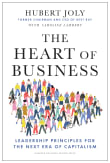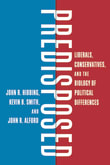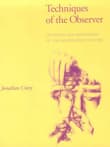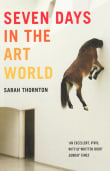Ways of Seeing

Book description
"Seeing comes before words. The child looks and recognizes before it can speak.""But there is also another sense in which seeing comes before words. It is seeing which establishes our place in the surrounding world; we explain that world with words, but word can never undo the fact that we…
Why read it?
7 authors picked Ways of Seeing as one of their favorite books. Why do they recommend it?

This book was introduced on the first day of art school. Then, it was reintroduced and repeated by each professor for the duration of my education. As such, it's fair to say that it's an enduring force within academic circles.
The book touches on major points essential for any informed artist and the need for modern artists to subvert our viewers' hidden biases. It eloquently teaches artists to dive beneath the surface of a work to understand the unseen, the context, and the subtext. Ways of Seeing skillfully inspires a new lens through which to view the world and urges…
From Tyler's list on unleashing your creative potential.

Berger introduced me to the concept of the male gaze. He explored it primarily in the world of art, but I realized it applied also to the world of advertising.
Among other things, it explained to me why nude and semi-nude women are often featured in women’s magazines. I learned that women carry within us a man who is looking at us, and we are socialized to want to attract and appeal to that man. This has been a key concept in my work.
From Jean's list on books critiquing advertising and the popular culture.

This classic text juxtaposes contemporary popular media with well-known works of art, and in doing so lays bare the hidden, timeless motives behind art production and collecting.
The book combines short articles with photo “essays”, and it’s actually the images that supply the most convincing argument. To see a Playboy centrefold alongside a nude by Ingres, or a food advert next to a still life by a Dutch master, forcefully illustrates Berger’s central point: that art is, and always has been, tied closely to commerce, commodification, and possession.
In short, art sells things – whether experiences, pleasures, values, or a…
From Gareth's list on understanding the crazy world of contemporary art.
If you love Ways of Seeing...

In one sense Berger’s work is a further exploration of many of Benjamin’s ideas on the social functions of art and visual imagery. Berger is even more emphatic in underlining the changing social (and economic) imperatives that have created particular genres of art. In this book the main emphasis is Eurocentric as Berger weaves his story of the social logics of images into an account of the class and gendered character of the art world and, more particularly, of the world of paintings.
As a Marxist reading of the tradition Ways of Seeing emphasizes social class and dominant class relations…
From Barry's list on beginning the study of visual culture.

Most of us look without seeing (much). We miss the key details. They might be facial expressions, revealing whether somebody is friend or foe or what is really going on in a famous painting. Berger brings in history, politics, socio-economic issues, the whole nine yards to make viewing art not the sterile exercise that some might take it as. Written in an accessible style with lots of visuals, no wonder the BBC ran a series based on this book back in the day.
From Dan's list on the heart of leaders when democracy is at risk.

“The relation between what we see and what we know is never settled.” Ways Of Seeing is an absolutely seminal required read for anyone living today, immersed in a culture made of media. It was published in 1972, appropriately based on a television series since it is about how different forms of representation - and how we look at them - impacts how we think and how culture operates. Whilst it draws on critical theory it was written to be approachable and indeed went on to influence a whole new era in thinking about images in culture, power dynamics, and…
From Faris' list on on how valuable your attention is.
If you love John Berger...

This is one of the most astute meditations on the way we understand the world through our eyes. “Seeing comes before words,” Berger writes. “The child looks and recognizes before it can speak.” With unadorned clarity, Berger consistently states what is true. And, with that gift, he examines the way early man first represented human experience in visual terms, which leads him to a description of the way we look at paintings, followed by his insights about the way to read photographs. He abides by our native visual language and shows how seeing gets complicated by cultural meanings that change…
From Philip's list on for understanding photography as art.
Want books like Ways of Seeing?
Our community of 12,000+ authors has personally recommended 100 books like Ways of Seeing.





























